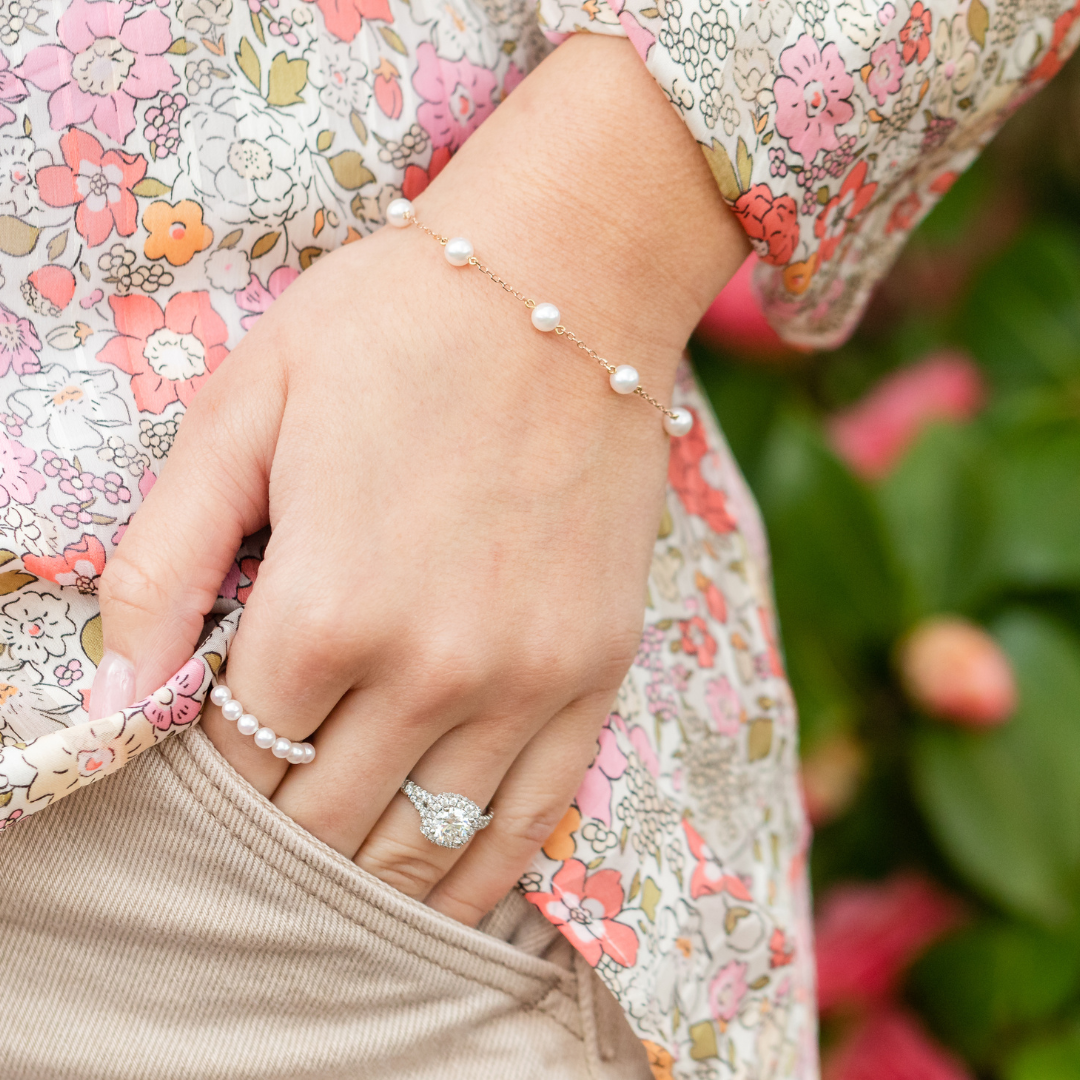
When you think of the pearl, perhaps you envision images of poise and beauty; you probably imagine the recognizable white bead-like object born out of an oyster’s shell. Many think that all pearls are white, when in actuality, they derive color from the colored lip of the mollusk in which they were formed. As such, they can display multiple shades and hue as their layers of iridescent nacre (found in the shell of oyster, also known as mother-of-pearl) reflect light and pick up the surrounding colors it touches. Follow along for a little exploration into a few maybe not-as-well known pearl colors and what those colors mean!

Stay Neutral
White
Perhaps the most common, white pearls are what come to mind when you hear the word “pearls”. Long before they came to be synonymous with famous beauties like Grace Kelly and Jackie Onassis Kennedy, they were synonymous with innocence, wisdom, sincerity, and new beginnings. This is what makes the white pearl a true classic for most brides on their wedding day. There are three main varieties: Akoya, Freshwater, and South Sea. While technically white, they can have hues of pink, cream, and silver in their milky coating.
Black
Some of the most mysterious of all pearls, the black pearl is among the most exotic in the world. While most are treated or dyed, the Tahitian Black Pearl occurs naturally from the jet-black lip of its oyster shell. Black pearls are said to represent mystery, independence, strength, and riches.
Grey
Nothing gloomy about these, the grey pearl symbolizes dignity, patience, wisdom, progress, self-control, focus and security. With its neutral base color and warm pink or cool blue overtones, you don’t need to worry about it washing you out – there is a hue for everyone.
Proud as a Peacock
Blue
Of all the pearls, blue may be the rarest. Naturally occurring, these pearls arrive in a breath-taking range of shades, from silver-blue to midnight blue, with a vast array of hues in between. Available in four varieties, Akoya, Silver-Blue White South Sea, Tahitian, or Sea of Cortez, the blue pearl represents represent truth, tranquility, trust, and courage.
Green
If you are lucky enough to find a natural green pearl, rejoice. Most green pearls are dyed because they are so rare. The most popular is the Peacock Tahitian because of its luster that mimics the iridescence of peacock feathers. A green pearl symbolizes balance, nature, hope, growth, and renewal.
Purple
Naturally occurring in freshwater pearls from China, purple pearls have a wide spectrum of shades, from lilac to mauve, lavender to eggplant, with green and yellow undertones. Purple pearls symbolize artistry, wisdom, complexity, nobility, and passion.
Colors You Can Taste
Chocolate
Luxurious and rich, the chocolate pearl looks delicious enough to eat. Although not a naturally occurring hue, the chocolate pearls stand for harmony and dependability, healing, comfort and protection.
Peach
Also referred to as pink pearls, these pearls occur naturally in freshwater aquaculture ponds in China. Their palette ranges from silvery pink to deeper magenta, with warmer tones in between. Soft and romantic, they represent all the feel-good attributes: love, passion, energy, compassion, and loyalty.
Champagne
Also known as gold or yellow pearls because of their wide variety in shades, these cheerful pearls represent wealth, creativity, clarity, and prosperity. Golden South Sea are among the biggest and rarest cultivated of champagne pearls. Sumptuous and naturally occurring, they represent the finer things in life.
Visit our Shreve & Co. location in Palo Alto to explore our selection of pearls!


